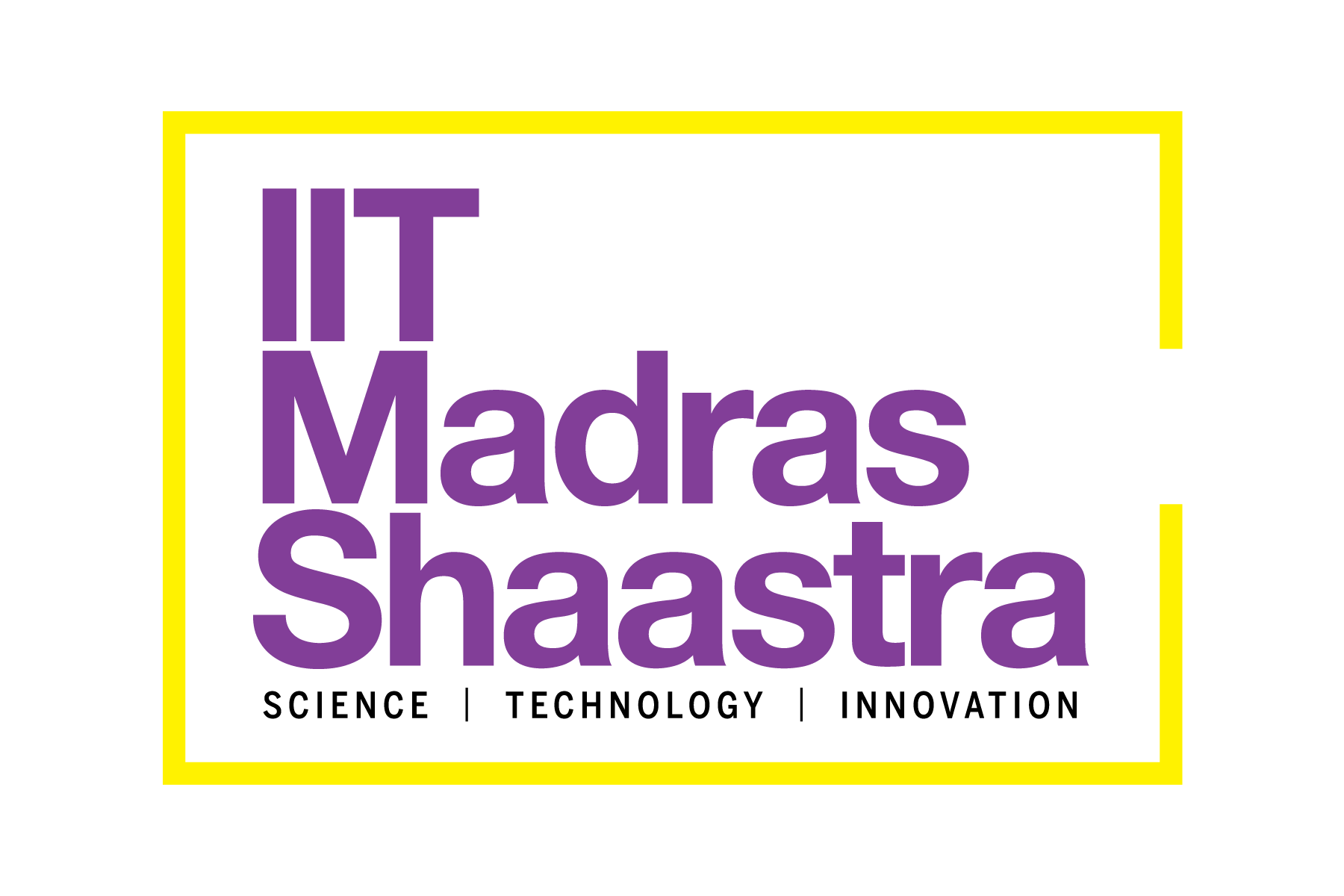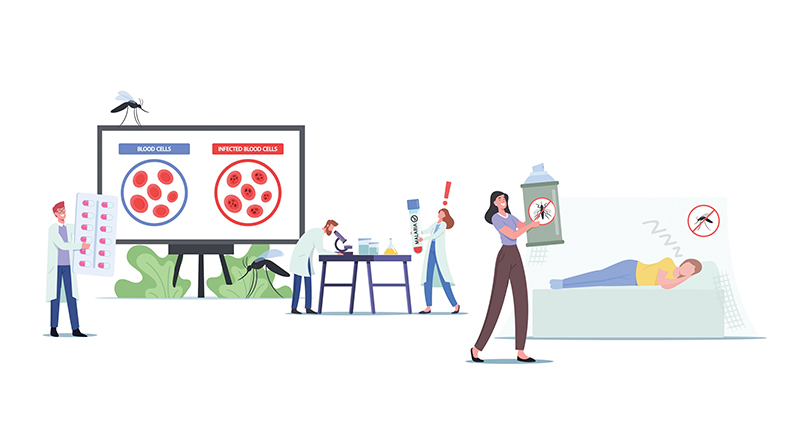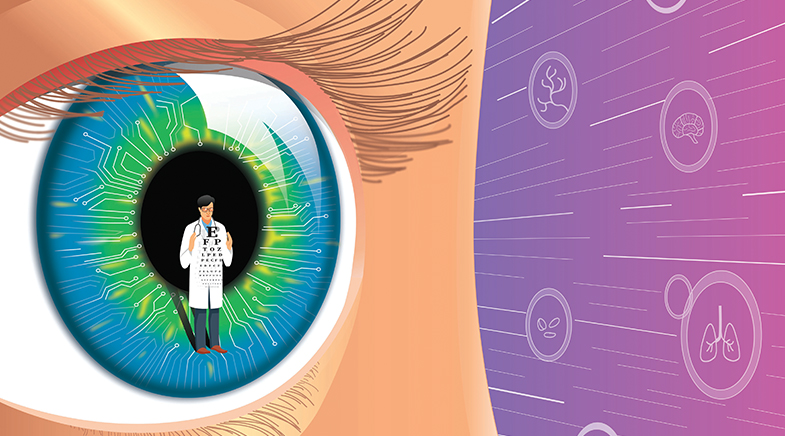For a happy birth day
-
- from Shaastra :: vol 04 issue 09 :: Oct 2025

Indian researchers are bringing the human touch to handling stillbirth.
Rakhi Dandona comes across the tragedy of stillbirth regularly. Yet, certain incidents stand out. The Vice Chair of the International Stillbirth Alliance, an umbrella body of organisations working to prevent stillbirth, recalls in particular the pregnant woman who went to a primary healthcare set-up after feeling uneasy. She was, however, sent back home without a check-up. Three days later, when she returned to the centre, she was told there was no foetal heartbeat: the baby had died inside her womb. No one at the centre was willing to help her deliver the stillborn, and so she did it all by herself, in the toilet.
The incident highlights how a stillbirth might have been prevented. It also underscores the absence of an empathetic system to handle the aftermath of a stillbirth.
Stillbirths are those lives that were developing well, but never made it out alive. Some die within the uterus, before delivery, and others at the time of delivery. These are viable pregnancies and different from miscarriages, which occur earlier in a pregnancy. The World Health Organization (WHO) considers those who die after 28 weeks as stillborn (bit.ly/WHO-Stillbirth). In a system where health policies and funding usually focus more on saving the mother and the newborn, stillbirth has slipped through the cracks, says Reema Mukherjee, a scientist at the Division of Reproductive, Child Health & Nutrition of the Indian Council of Medical Research (ICMR).
Mukherjee helmed a comprehensive study by ICMR, covering nearly 2.3 lakh pregnant women from across India, to study the prevalence of stillbirth and understand the risk factors associated with it. The ICMR Stillbirth Pooled India Cohort (SPIC) (bit.ly/ICMR-SPIC) is a dataset developed from 10 established pregnancy cohorts. The original studies did not focus on stillbirth, but on other parameters of health and reproduction. The only common thread among these studies was that they recorded stillbirth. The ICMR compiled all the data, harmonised them, and created a cohort that could be used by researchers.
The detailed results on risk factors will be published soon, Mukherjee says. "Broadly, the findings were in line with what was expected. What makes this study unique, however, is that instead of relying on single-study data, it pools information from multiple cohorts. This gives the results greater strength and makes them far more generalisable," she says.
Based on the data, the ICMR is now working on developing a predictive model that could identify high-risk pregnancies and work towards preventing stillbirths.
The general risk factors associated with stillbirth are poor maternal health, young or advanced age at pregnancy, previous history of stillbirth and conditions such as preeclampsia, hypertension and diabetes. Manisha Nair, who was associated with the ICMR project and is part of the core group analysing the data for association of anaemia with stillbirth, points out that she conducted studies in India and the United Kingdom, and a common factor associated with stillbirth was maternal anaemia. "I was surprised, because anaemia is low in the U.K. (2%) and very high in India (50%)," says Nair, Professor of Global Health at the University of Copenhagen. "Other prominent risk factors in the U.K. are smoking and alcohol consumption, and late age at pregnancy, which are low risks in India. In the future, though, these could be high risks even in India," says Nair. Data collected from Maternal and Perinatal Health Research India, an initiative led by Nair in place in 16 hospitals across the country, has been included in the ICMR report.
Nair was involved in a study (bit.ly/disparity-stillbirth) conducted a few years ago that noted the strong link between socio-economic disparities and the incidence of stillbirth. It also observed a wide disparity in the incidence in nine Indian States surveyed. Chewing tobacco was seen as a risk factor and termed a "modifiable" factor, along with maternal and foetal complications.
PREDICTIVE MODELLING
Based on the data, the ICMR is now working on developing a predictive model that could identify high-risk pregnancies and work towards preventing stillbirths. While not every stillbirth can be prevented, timely intervention can reduce such instances. Apart from monitoring maternal health, certain signs, such as a change or decrease in foetal movements, stomach cramps and vaginal bleeding, could be indicators. There is already an ongoing ICMR-funded multi-centre study across Palwal, Haveri, Bareilly, Shillong, and Pune, called Strategies to Reduce Stillbirth.
According to the National Family Health Survey, there are 9.5 stillbirths per 1,000 deliveries in India. However, regional disparities, Nair points out, are high, with States such as Uttar Pradesh and Assam bearing a higher burden of stillbirths. "Also, many stillbirths are still not officially counted, so the scale of the problem is hidden," Mukherjee adds.
A retrospective study (bit.ly/Stillbirth-burden), which used India's Health Management Information System 2019 data, estimated that around 2,63,000 stillbirths occurred in the country that year. The study found that stillbirths contributed to about 18 million disability-adjusted life years, and imposed an economic burden of nearly ₹7.7 trillion in 2019.
BEREAVEMENT CARE
A stillbirth is also a personal tragedy. While the health system may have made improvements in reducing the stillbirth rate, similar progress in handling the emotional aspect of a stillbirth has not happened. The personal loss is compounded by social stigma and poor management, starting with services at the healthcare set-up.
Dandona recalls the story of a father from rural Odisha. "Their child was stillborn. The nurse threw it in the bin right in front of him. He was left stunned, grappling with grief and questions," she says. Women deal with issues of lactation and post-partum problems that come with live births, but they drop out of medical care.
Often, parents are blamed for stillbirths, accused of coming too late to the hospital. At other times, well-meaning consolation is hurtful, too. "Comments like 'don't feel too bad, it was a girl' or 'you will get pregnant again', are not what the parents want to hear," says Dandona, who is also a Director at the Public Health Foundation of India, which is working with the ICMR on developing a 'Bereavement Care' model that can be integrated into the country's public health system. Other institutions involved in the project are the Postgraduate Institute of Medical Education and Research, Chandigarh; the Jawaharlal Institute of Postgraduate Medical Education & Research, Puducherry; and the All India Institute of Medical Sciences, Bibinagar.
Indian institutes are framing questionnaires to understand the limitations of the healthcare system as well as what bereaved parents expect from it.
Global conversations on bereavement cannot be replicated within the Indian cultural context. In the West, there is emphasis on letting the parents name the child and hold a funeral as part of the grieving and healing process. Indian rituals differ. Ensuring that the bereaved woman did not return to the maternity ward, and training on how to break the bad news to the couple, would be more India-specific, says Dandona.
Indian institutes are framing questionnaires to understand what bereaved parents expect from the system, as well as the limitations of the healthcare system. Interactions with the medical staff show that often they are overworked, and may have to focus on saving a life that can still be saved. Displaying a lack of empathy also sometimes helps the medical staff deal with deaths. "We have to integrate the needs of the parents with the challenges and stress of the healthcare staff before we develop a care protocol that can be integrated into every stage of the pregnancy, from antenatal to postnatal care," Dandona says.
Have a
story idea?
Tell us.
Do you have a recent research paper or an idea for a science/technology-themed article that you'd like to tell us about?
GET IN TOUCH














